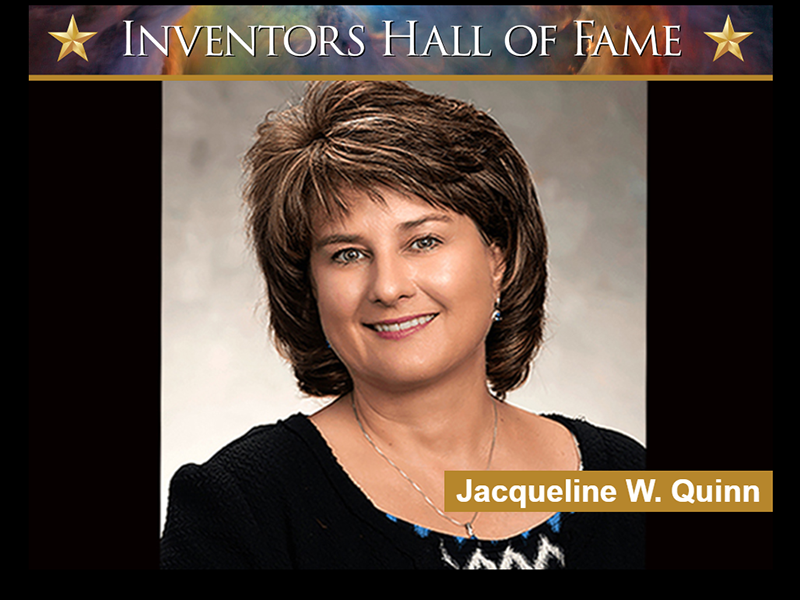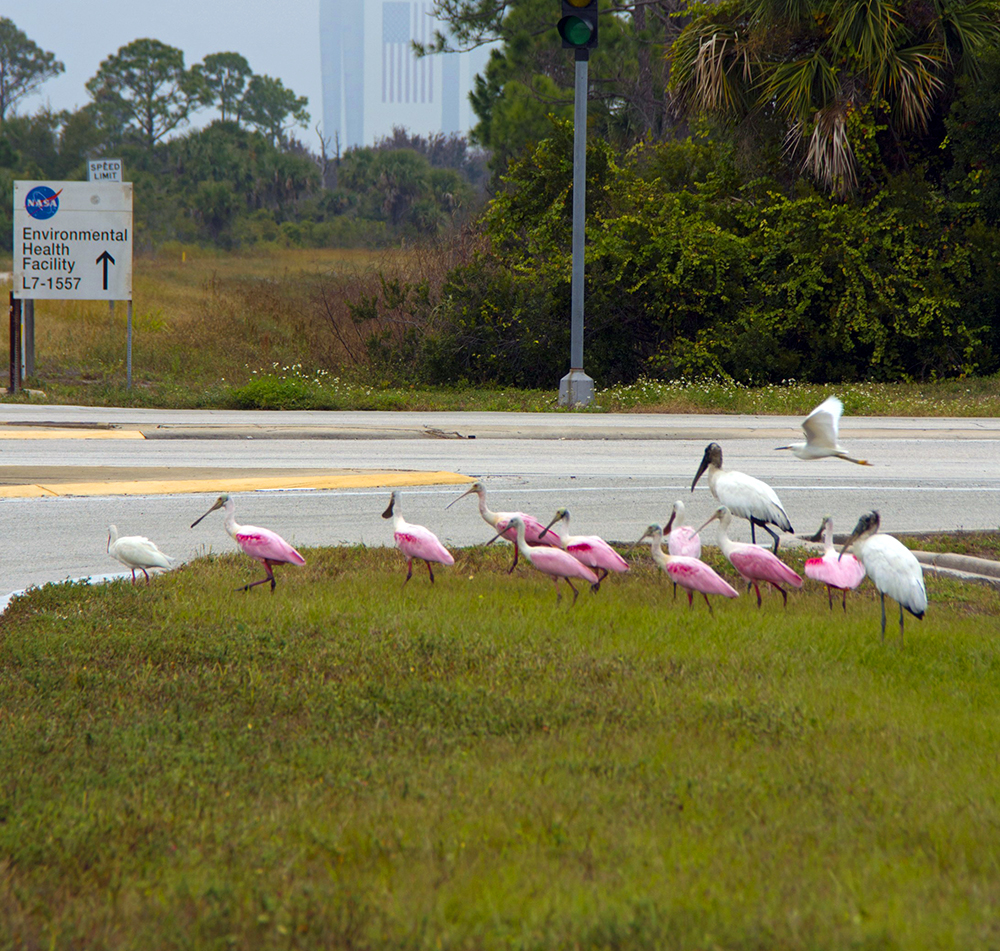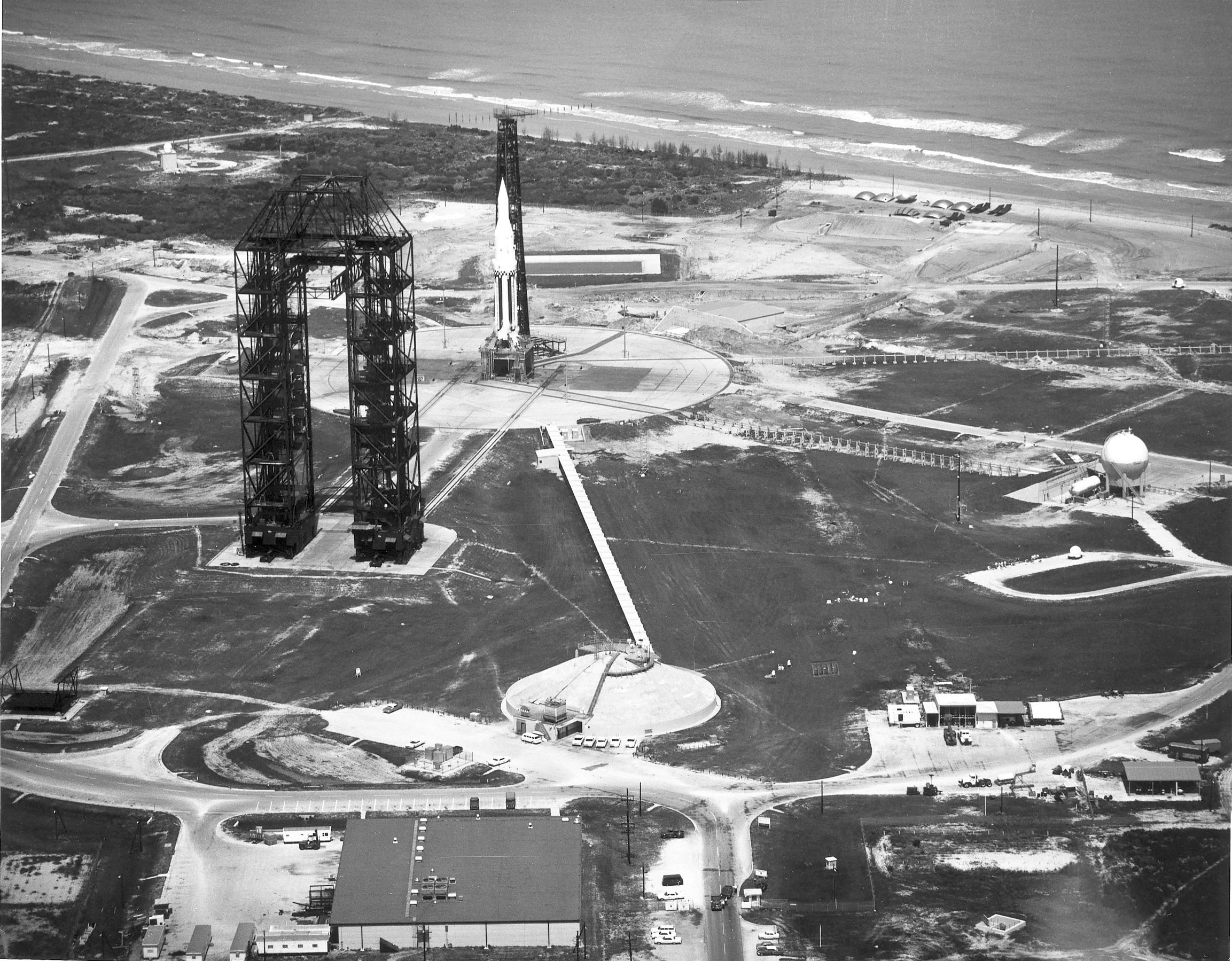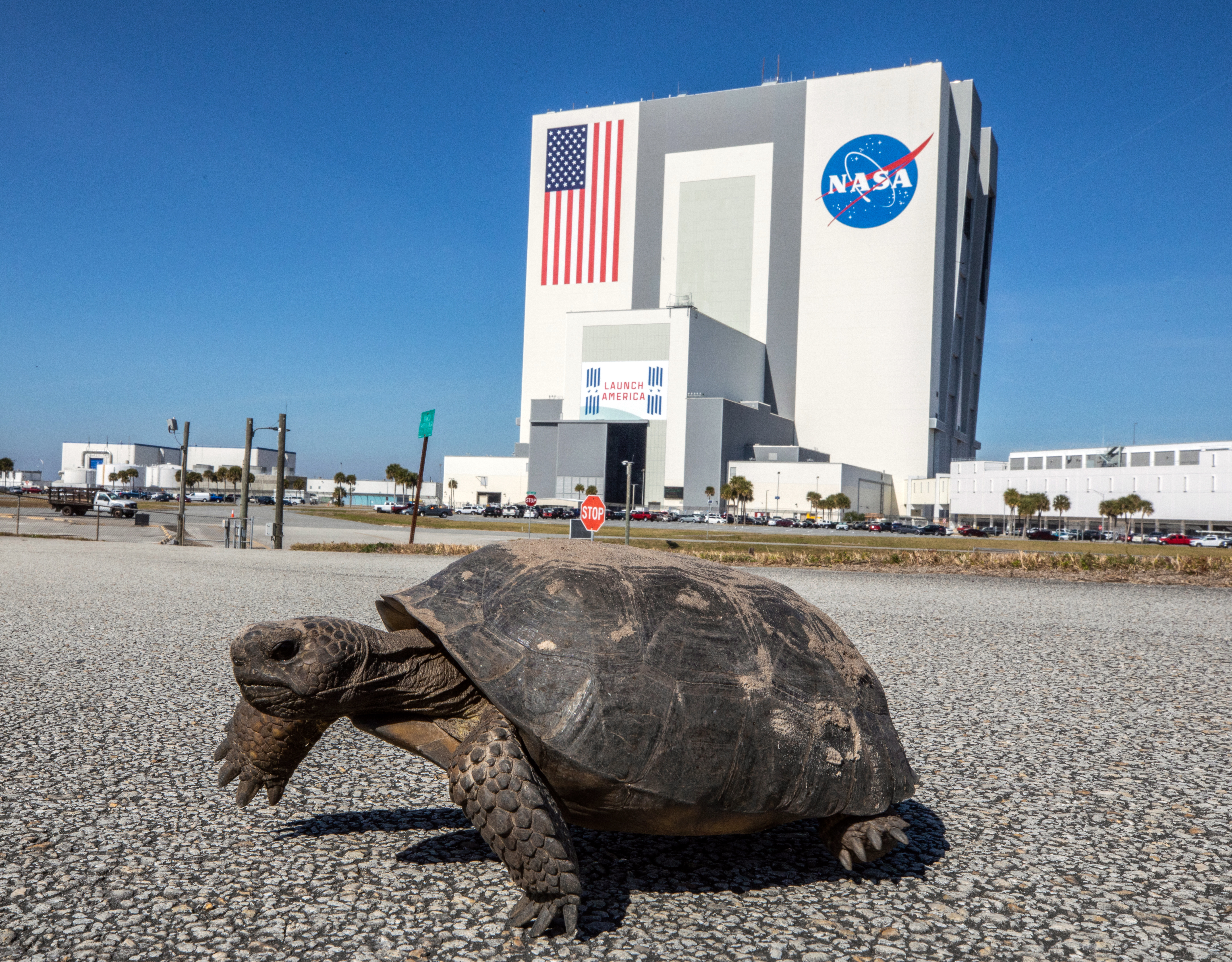
From the Earth to the Moon, Jackie Quinn, an environmental engineer at NASA’s Kennedy Space Center in Florida, is an innovation powerhouse. She’s applying her Earth-bound experience to technology for the lunar surface as the project manager for the Mass Spectrometer Observing Lunar Operation (MSOLO) instrument and The Regolith and Ice Drill for Exploring New Terrains (TRIDENT) drill.

Inducted into the National Inventors Hall of Fame in 2018, Quinn holds 12 patents, technologies that are licensed by organizations around the world. She gave NASA’s Technology Transfer program a glimpse into her world.
What is one example of how you came up with a new technology?
We were looking at how to extract Polychlorinated Biphenyls (PCBs) from paint. The paint was used on the exterior of many buildings at Kennedy in the 1950s, but we now know PCBs are dangerous to humans. Around that time, I read an article about how plastics were washing up on shores around the world, and scientists were looking at what was in the plastics – they were full of these PCBs. I thought using plastic might help the cleanup techniques we were exploring.
I wondered if it was possible to improve PCB absorption by putting a solvent inside plastic, which PCBs are extremely attracted to. So I went to the cafeteria and grabbed some drinking straws. In the lab, I heat-sealed one end and filled it part way with some ethanol, grain alcohol that’s benign, to act as the solvent. I put the ethanol-filled straw in a basic water system to see if the PCBs outside the straw would move through the plastic and into the solvent.
I left it overnight, and in the morning there was evidence that some chemical reaction had taken place. In a very short period of time and across the fairly thick membrane of the straw, the PCBs moved from one side of the straw to the other to get into the ethanol. The level of PCBs outside the straw in the surrounding water dropped and we could detect PCBs in the ethanol interior.
It started with an, “I wonder” statement – I wonder if this would work.

What was important about this discovery?
PCBs pollution settles in the sediment of bodies of water such as rivers, lakes, ports, as well as around sources of groundwater. However, they can't stand water – they're hydrophobic – and that sediment system they're in is in water. As a result, the PCBs try to attach to an organic particle.
If we could manufacture something that emulated that process of a thin plastic structure filled with ethanol so we could insert that into a sediment system, then the PCBs would likely leave the sediment. It worked – they migrate into what we now call the SPEARS. That stands for Sorbent Polymer Extraction and Remediation System.
Anyone can license that technology and use it. It’s a cool thing to see industry wrap around the capability and figure out how best to use it.
See: Environmental Cleanup Courtesy of a NASA Cafeteria Brainstorm
Did that help with the PCB removal from paint?
Yes. We developed another technology called activated metal treatment system, AMTS. It uses ethanol as well as a metal to remove and treat PCBs from paints, caulking material, and adhesives.
PCBs were added to things that you wouldn’t really think contained PCBs such as electrical transformer oil. They were also ubiquitously used in certain types of industrial paints, adhesives, and caulking materials. PCBs enhanced the flame-resistance of the products that used them, an important quality for buildings near a launch site. Here at Kennedy, a lot of the exterior walls were coated with paints that had PCBs in them because of the large temperature flux we experience. The paints from the 1960s are still in great shape because it could handle those temperature swings.
Because we recognized that ethanol was a substance that PCBs were attracted to, we mixed it into a paste that also included the metal magnesium. AMTS degrades the PCBs though an electron donor transfer process, cleaving off chlorine atom by chlorine atom until the multi-chlorinated molecule of PCBs degrades to biphenyl, which is a benign substance. And it does it quickly – within four hours or so.

Photo credit: NASA
Are these the only environmental cleanup technologies you developed?
In the early 1990s, there was a lot of research putting iron shavings into the subsurface so they could passively react with certain types of contamination that dissolved in groundwater. It would degrade the contaminants to benign byproducts in a way that was similar to the PCB/ethanol reaction. But it wasn't as effective in working with high concentrations of an undiluted product.
Our objective was to find a way to utilize the electron transfer capability, an energy transfer that happens when iron comes in contact with water in the presence of these chlorinated solvents.

Here at Kennedy, thousands of gallons of chlorinated solvents soaked into the ground during the Apollo program. They were once used to clean rocket engine components and are now known toxins and carcinogens and extremely difficult to eliminate from soil and groundwater.
This is a simplified explanation, but what we came up with was emulsified zero-valent iron (EZVI). We used an edible oil like vegetable oil to create a bubble that we filled with a mix of water and iron. Each one of those little bubbles is like a little micro reactor. Because the outer layer, oil, is hydrophobic, it moves to where other hydrophobic solvent material is located – like is attracted to like. Once it’s up against another hydrophobic chemical, which happens to be the chlorinated solvents we want to remove, that material is drawn into the oil and the chemical reaction inside breaks it down.
We injected EZVI into the soil, and it quickly “dismantled” the chemical compounds into smaller, benign harmless molecules. EZVI has been used to clean up numerous government-owned sites, but one of the successes I’m most proud of was the clean up a train derailment site in Livingston, Louisiana. The site was on the EPA National Priority List prior to using this patented technology. In a few months, EZVI was able to dramatically reduce persistent chemicals from the groundwater after 14 years of failed attempts. At the time when EZVI was first introduced, there really wasn't a technology that could do that. The patent expired, so the formula and process are now fully in the public domain.
Read more: Safely Detoxifying Soil and Groundwater with NASA Technology
Now you’re developing technology to explore the lunar surface. What are you doing and how is it related to your work on Earth?
Currently, I’m managing a team of engineers and scientists that are ruggedizing a commercially developed mass spectrometer for spaceflight. This ruggedized technology is headed to the south pole of the Moon in late 2024 to analyze the lunar soil for water and other volatiles. The mass spectrometer known as MSOLO is paired with a lunar drill that will bring approximately 10 cm segments of lunar soil to the surface from as deep as one meter for qualification and quantification of volatile compounds. We’ve built four MSOLO units for flight. All were originally manifested on different lunar landers as part of NASA’s new Commercial Lunar Payloads Services contracts, but only one is set to fly in 2024. Known as PRIME-1 (Polar Resources Ice Mining Experiment), the first MSOLO unit will sample lunar soil along Shackleton’s connecting ridge. It will be the first attempt to understand what gases are bound within the upper meter at the lunar south pole.
I was asked to work on technology that could support lunar drilling and water detection on the Moon almost twenty years ago because I had such familiarity with shallow drilling on Earth. It’s been an amazing adventure!
~ ~ ~
The NASA Technology Transfer program ensures that innovations developed for exploration and discovery are broadly available to the public, maximizing the benefit to the nation. NASA ensures inventions for space find practical uses closer to home. They often become solutions to different challenges – ones we didn’t set out to solve.
To learn more about Jackie Quinn’s technologies and those of other NASA inventors, visit the Technology Transfer program Patent Portfolio https://technology.nasa.gov/




